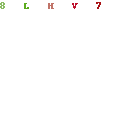An average child will go through several thousand diapers in his life. Since disposable diapers are discarded after a single use, usage of disposable diapers increases the burden on landfill sites, and increased environmental awareness has led to a growth in campaigns for parents to use reusable alternatives such as cloth or hybrid diapers.[citation needed] An estimated 27.4 billion disposable diapers are used each year in the US, resulting in a possible 3.4 million tons of used diapers adding to landfills each year.It is possible, however, to buy disposable diapers with a low environmental impact.
The environmental impact of cloth as compared to disposable diapers has been studied several times. In one cradle-to-grave study sponsored by the National Association of Diaper Services (NADS) and conducted by Carl Lehrburger and colleagues, results found that disposable diapers produce seven times more solid waste when discarded and three times more waste in the manufacturing process. In addition, effluents from the plastic, pulp, and paper industries are far more hazardous than those from the cotton-growing and -manufacturing processes. Single-use diapers consume less water than reusables laundered at home, but more than those sent to a commercial diaper service. Washing cloth diapers at home uses 50 to 70 gallons of water every three days, which is roughly equivalent to flushing the toilet five times a day, unless the user has a high-efficiency washing machine. An average diaper service puts its diapers through an average of 13 water changes, but uses less water and energy per diaper than one laundry load at home.
In October 2008, "An updated lifecycle assessment study for disposable and reusable nappies" by the UK Environment Agency and Department for Environment, Food and Rural Affairs stated that reusable diapers can cause significantly less (up to 40 per cent) or significantly more damage to the environment than disposable ones, depending mostly on how parents wash and dry them. The "baseline scenario" showed that the difference in green-house emissions was insignificant (in fact, disposables even scored slightly better). However, much better results (emission cuts of up to 40 per cent) could be achieved by using reusable diapers more rationally. "The report shows that, in contrast to the use of disposable nappies, it is consumers’ behaviour after purchase that determines most of the impacts from reusable nappies. Cloth nappy users can reduce their environmental impacts by:
- Line drying outside whenever possible.
Tumble drying as little as possible.
When replacing appliances, choosing more energy efficient appliances (A+ rated machines [according to the EU environmental rating] are preferred).
Not washing above 60°C [140°F].
Washing fuller loads.
Reusing nappies on other children."
There are variations in the care of cloth diapers that can account for different measures of environmental impact. For example, using a cloth diaper laundering service involves additional pollution from the vehicle that picks up and drops off deliveries. Yet such a service uses less water per diaper in the laundering process.[19] Some people who launder cloth diapers at home wash each load twice, considering the first wash a "prewash", and thus doubling the energy and water usage from laundering. Cloth diapers are most commonly made of cotton, which is generally considered an environmentally wasteful crop to grow. "Conventional cotton is one of the most chemically-dependent crops, sucking up 10% of all agricultural chemicals and 25% of insecticides on 3% of our arable land; that's more than any other crop per unit." This effect can be mitigated by using other materials, such as bamboo and hemp.
Another factor in reusable cloth diaper impact is the ability to re-use the diapers for subsequent children, sale of used diapers through diaperswappers.com, craigslist or other online communities, donation of used diapers through recycling groups such as freecycle or to charities such as miraclediapers.org . Many reusable diaper users take advantage of these resources and may even join communities like livejournal's clothdiapering in order to find ways to make their diaper-washing routine more efficient or get feedback about different types of reusable diapers. These factors can alleviate the environmental and financial impact from manufacture, sale and use of brand-new reusable diapers.
source: wikipedia
